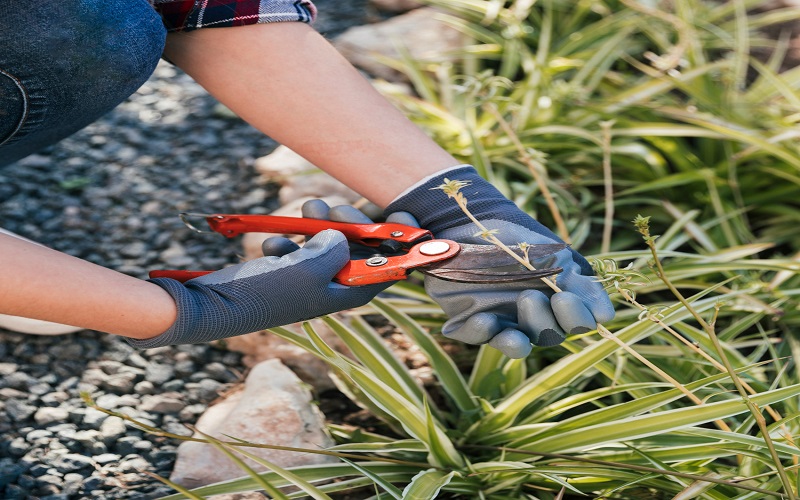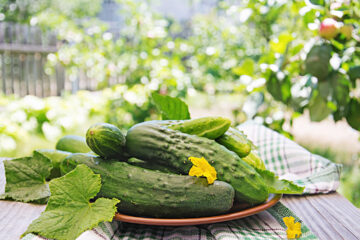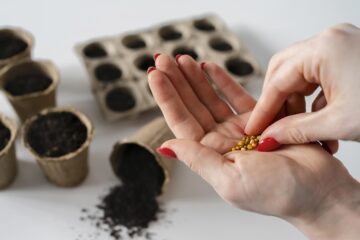Did you know that pruning can reduce disease incidence in leafy vegetables by up to 50%?
The act of pruning goes beyond mere maintenance; it serves as a crucial shield against pathogens and infections that threaten your vegetable garden.
By understanding the underlying mechanisms of how pruning protects leafy greens, you can empower yourself with the knowledge needed to cultivate a thriving and disease-resistant crop.
Importance of Pruning for Disease Prevention
Pruning leafy vegetables is a critical agricultural practice aimed at preventing plant diseases, which can devastate crops and reduce yield. The process involves selectively removing parts of the plants to enhance air circulation and eliminate infected or potentially infectious materials. Employing precise pruning techniques, such as cutting at a 45-degree angle to ensure quick healing and reduce water retention on cut surfaces, and sterilizing tools between cuts with alcohol or a 10% bleach solution, gardeners can significantly lower the risk of disease spread.
The removal of dead or diseased foliage is not merely a preventative measure against disease transmission; it’s a vital intervention to maintain the health and productivity of the crop. This action facilitates better air flow and light penetration, reducing the humidity that diseases thrive in and boosting plant resilience.
Furthermore, pruning is crucial for optimizing fruit production. It redirects the plant’s resources from maintaining unnecessary foliage to developing fruits, enhancing both the quality and quantity of the harvest. Regular incorporation of pruning into garden maintenance schedules ensures a vibrant, disease-resistant leafy vegetable garden, capable of producing abundant, healthy fruits.
How Pruning Enhances Plant Health
Enhancing plant health through proper pruning techniques involves improving air circulation, reducing humidity, and preventing the spread of fungal diseases among leafy vegetables. When you prune plants, you’re taking care of them in a way that promotes their overall well-being. Here’s why removing specific parts, whether dead or diseased, is a good idea:
- Disease Isolation: By removing sections of the plant that are diseased, pruning acts as a physical barrier, isolating diseases and preventing them from spreading to healthy parts.
- Stress Reduction: Plants with excessive, unproductive growth expend more energy on maintenance. Pruning reduces this burden, allowing plants to focus their resources on developing strong, healthy structures and defenses against pathogens.
- Improved Nutrient Distribution: Pruning helps in the efficient distribution of nutrients to the vital parts of the plant, encouraging the growth of new, vigorous foliage and fruits.
- Enhanced Photosynthesis: By thinning out the plant, pruning increases the efficiency of photosynthesis across the plant by ensuring that more leaves have optimal exposure to sunlight.
Pruning Techniques for Disease Control
How can proper pruning techniques contribute to controlling diseases in leafy vegetables?
Pruning techniques play a crucial role in disease prevention. By carefully removing infected or damaged plant parts, you effectively stop the spread of diseases within your leafy vegetable crops.
Moreover, pruning helps to enhance sunlight penetration by eliminating excess foliage, creating an environment that’s less favorable for disease-causing pathogens. This increased sunlight exposure not only inhibits the growth of pathogens but also promotes plant vigor and overall health, making your leafy vegetables more resilient to diseases.
Incorporating specific pruning techniques can significantly bolster disease control efforts:
- Selective Pruning: Identifying and selectively removing just the infected or weak parts of the plant can prevent the unnecessary removal of healthy tissue, preserving the plant’s overall vitality.
- Timely Pruning: Conducting pruning activities during the plant’s dormant periods or at times when the weather is less conducive to disease spread (e.g., during dry conditions) can further reduce disease risks.
- Tool Care: Beyond sterilization, maintaining sharp, high-quality pruning tools ensures clean cuts that heal quickly, minimizing the opportunity for disease entry.
Benefits of Pruning in Disease Prevention
By increasing air circulation around your leafy vegetables, pruning plays a crucial role in disease prevention by enhancing the overall health of your plants. Here are four specific benefits of pruning in disease prevention:
- Removing Diseased Parts: Eliminating infected branches and parts of the plant prevents the spread of pathogens to healthy foliage.
- Promoting Healthy New Growth: Pruning encourages the growth of new, healthy branches and foliage, which are less susceptible to diseases.
- Enhancing Fruit Development: Proper pruning practices help in fruit development by allowing better sunlight exposure and air circulation.
- Decreasing Disease Susceptibility: By removing overcrowded areas in the canopy, pruning reduces moisture retention, lowering the risk of diseases.
Pruning Strategies for Disease Resistance
Pruning leafy vegetables is essential for boosting disease resistance by optimizing airflow and reducing moisture levels conducive to pathogen growth. By strategically pruning, you can improve air circulation around the plants, creating an environment less favorable for disease development.
Removing infected or damaged leaves through pruning not only prevents the spread of pathogens but also encourages the growth of new, healthy foliage. This fresh growth is typically more resistant to diseases, enhancing the overall health of the plant.
Additionally, proper pruning techniques allow for the early detection and removal of disease signs, effectively stopping further infection. Regular pruning practices contribute to plant vigor, enabling better disease resistance and aiding in the plant’s recovery process.
Adopting a strategic approach to pruning can further enhance its effectiveness in promoting disease resistance:
- Assessment Before Pruning: Regularly inspect plants for signs of stress, disease, or damage. This proactive assessment helps determine the most effective pruning strategy for each plant’s specific needs.
- Varied Pruning Techniques: Different plants and diseases may require different pruning techniques. Understanding the specific needs of your crops can lead to more effective disease management strategies.
- Community Education: Sharing successful pruning and disease management techniques within the gardening community can help raise awareness and improve overall plant health in the area.
By focusing on these detailed aspects of pruning, gardeners can significantly enhance the health and productivity of their leafy vegetable crops, ensuring a robust, disease-resistant garden that thrives across seasons.
Frequently Asked Questions
What Is the Purpose of Pruning Plants?
Pruning plants is essential for improving air circulation, allowing more light to reach leaves, and preventing disease spread. It strengthens plants, making them more resilient. By removing infected parts, pruning fosters healthier growth and overall plant health.
Should You Prune Diseased Leaves?
You should always prune diseased leaves to protect your leafy vegetables. It’s like removing a harmful virus to keep your plants healthy. Preventing the spread of pathogens is crucial for maintaining a thriving vegetable garden.
Why Do You Prune Leaves?
Prune leaves to boost air circulation, prevent diseases. By removing excess foliage, you reduce moisture, stop pathogens from spreading. Proper pruning limits overlapping, aids leaf drying, and blocks disease growth. Keep those veggies healthy!
What Is Pruning Why Is It Helpful?
Pruning, a vital practice, nurtures plants. You trim to boost health and yield. By snipping wisely, you enhance air circulation, thwarting diseases. Remember, pruning is your green thumb secret for thriving leafy veggies.
Conclusion
So, next time you’re tending to your leafy vegetables, remember that pruning isn’t just about shaping your plants – it’s about protecting them from diseases too.
Just like how trimming dead ends keeps your hair healthy, pruning helps your veggies stay strong and disease-free.
So grab those shears and give your leafy greens some love – they’ll thank you with a bountiful harvest!





